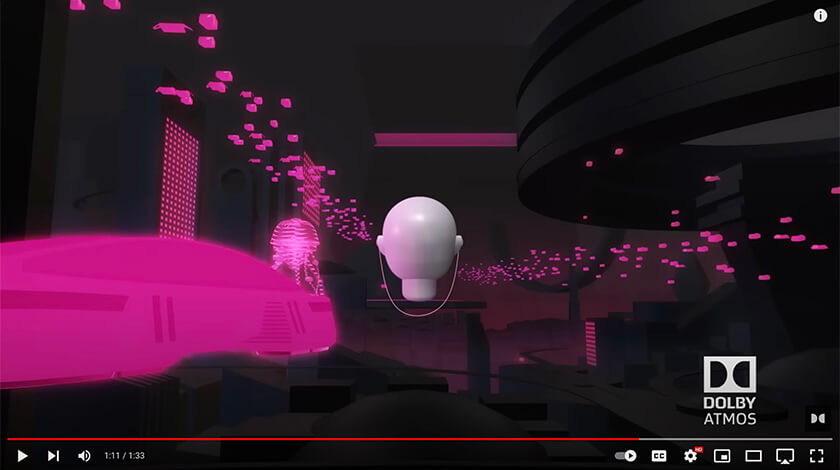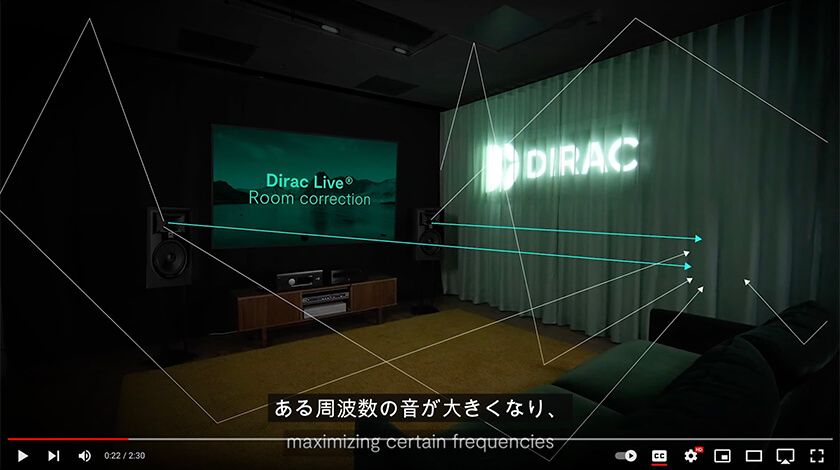Over the past few years, as people are looking towards their own homes to replicate experiences that were previously possible only in public (something our owner Michael Oh has dubbed, the Rise of Resimercial), home theaters have exploded in popularity. With home theaters, people can have immersive cinematic experiences in the comfort of their own homes. These home theater systems are acoustically optimized and designed to bring films to life, delivering an experience that often exceeds that of a commercial theater.
What makes a home theater truly unique?
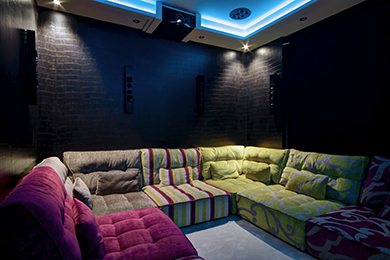
Customized
No two home theaters are alike. And if they are, it’s likely a cookie-cutter solution and isn’t going to create the immersive experience you’re trying to achieve. The best home theaters are designed by the professionals and factor in the size of the room, the materials (furniture and walls), and your lifestyle. Whether you want a small contained space purely for viewing, or a larger theater to entertain guests, your home theater should be built special for you and your space.
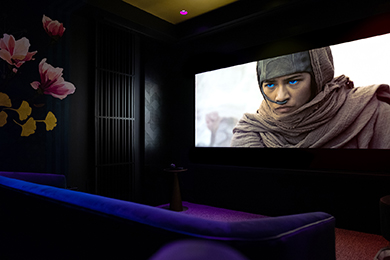
No distractions
Great films are often defined by the details. Whether it’s the sound design in Denis Villeneuve’s Dune or the cinematography of Céline Sciamma’s Portrait of a Lady on Fire, you want to be able to fully immerse yourself in a film, not be distracted by ambient light or outside noises. From blackout shades and full-spectrum lighting to acoustic treatments and voice control, the ability to have precise control over light and sound in your home theater is key to success. You want to be able to take in the subtleties that you might miss in a typical home viewing.
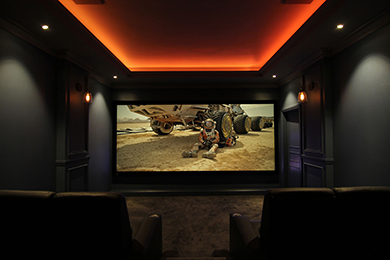
Total immersion
Cinema is one of the rare medium’s in life that can fully engross you. It can transport you to different places, cultures, or even distant worlds. Your home theater should pull you into films, so you feel like you’re right there flying with Maverick in his F-14, or journeying through Middle Earth with the Fellowship. This is achieved through a combination of acoustic optimization, surround sound, and crystal clear video, all designed specifically for your space so no matter where you sit in your home theater, you feel transported to another world.
Immersive audio
One of the clear advantages of a private cinema is the ability to acoustically optimize your space and install strategically placed speakers to create a realistic and enveloping audio experience. We work with a wide variety of audio manufacturers so that when we design your home theater, we have a full arsenal of tools available to design a cinema that is unique to you and your needs. But this goes beyond just having the best speakers on the market. Thanks to Dolby Atmos and acoustic optimization software like Dirac, we can ensure your speakers sound the way they were designed to sound, making movie watching, gaming, and music listening as engaging and enjoyable as possible.
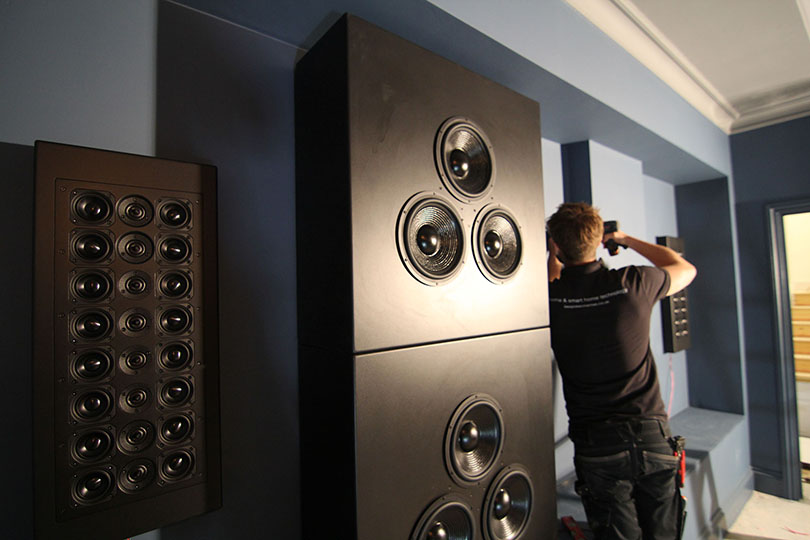
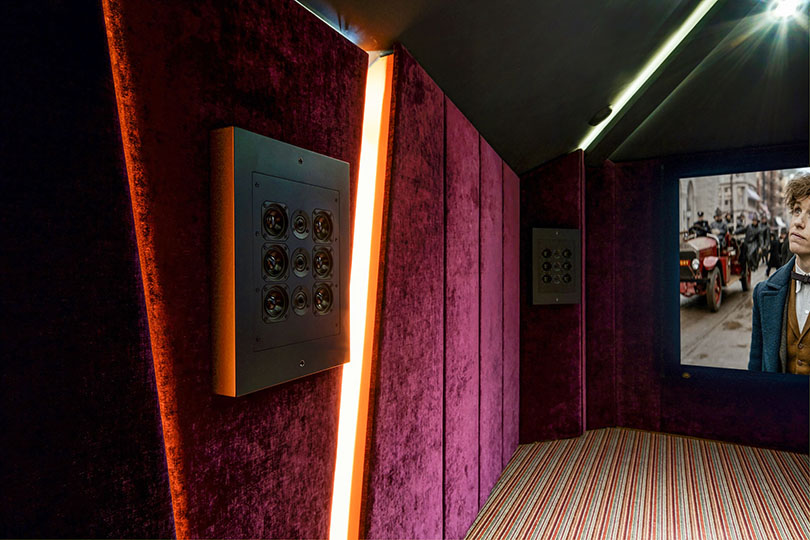
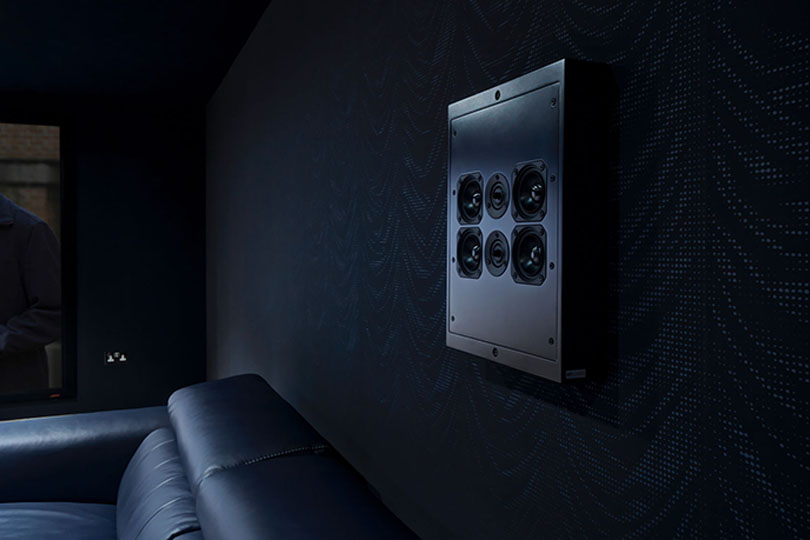
Enveloping video
A private cinema wouldn’t be complete without video that fully engulfs you in what you’re watching. While some cinemas are equipped with large televisions, most use a 4K projector and HD screen as they can bring films to life larger than most televisions on the market. For smaller spaces or ones where you can’t control lighting as precisely, an HD television is a better option than a projector screen. But in a private cinema where you can control the lighting fully and you want something above 100”, an HD projector screen is the way to go.
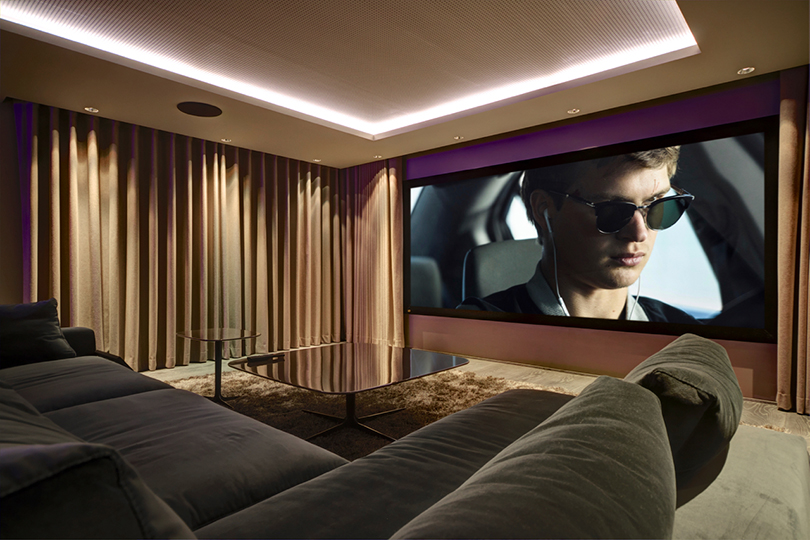
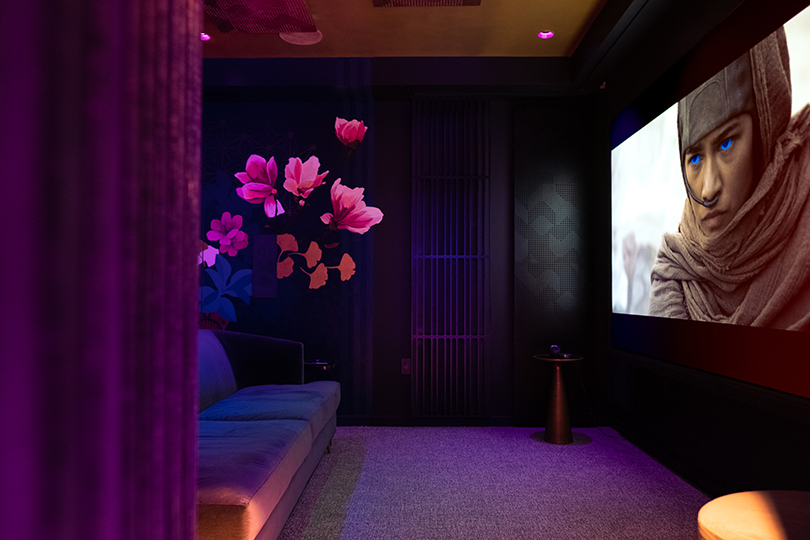

Private cinema design
One of the most unique aspects of private cinemas are how unique each is. When you work with a smart home integrator like TSP to design your cinema, you can make it look exactly as you imagine, whether you want to replicate the feel of an old movie theater, or focus on maximum relaxation. When we design your theater, we take into consideration many factors including room layout, lighting, acoustics, seating, and technology. The ideal room layout is one that is well-insulated and has minimal outside noise. Lighting should be adjustable to accommodate different levels of brightness during movie watching. Good acoustics are important for a clear and crisp sound experience, so consider adding soundproofing materials to the walls and ceiling. Seating should be comfortable and arranged in a manner that provides the best viewing angles.
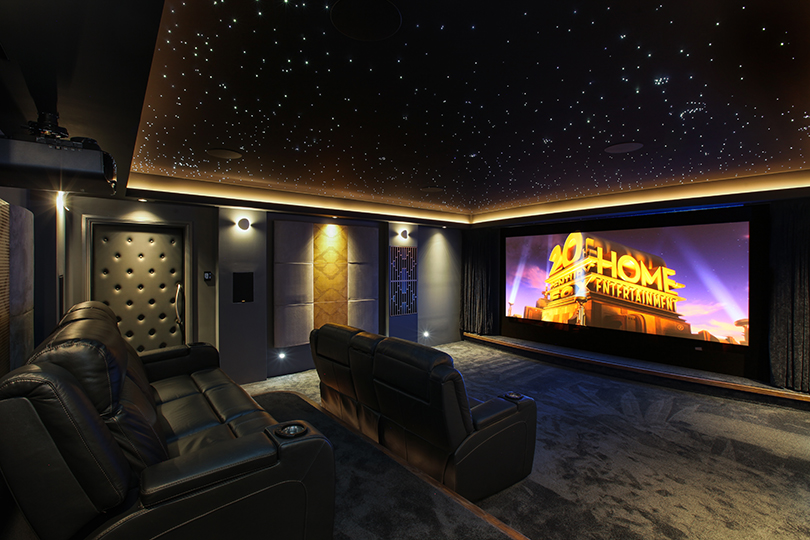
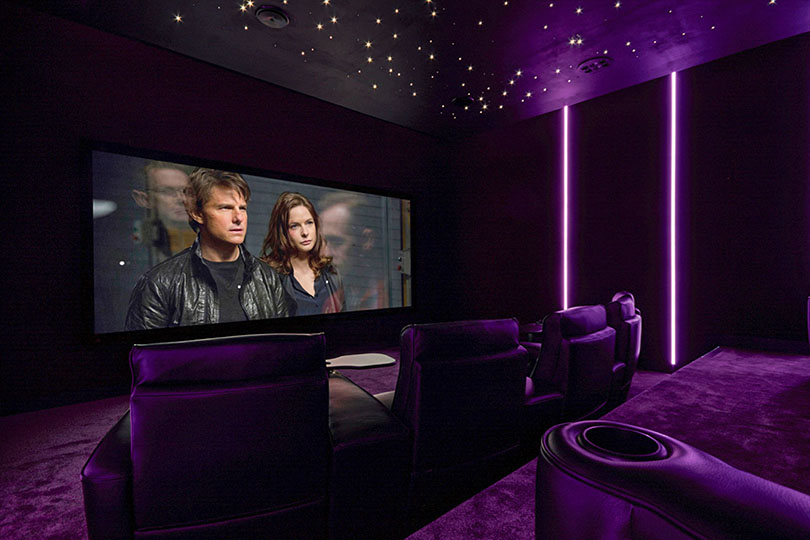
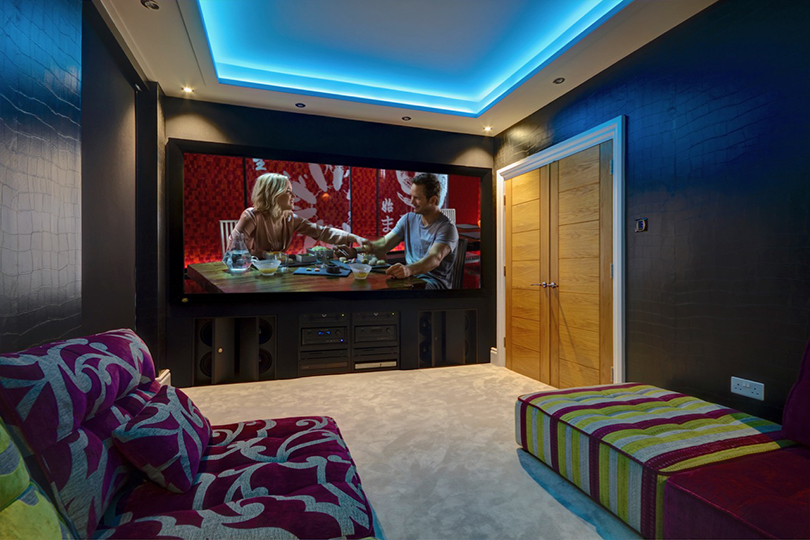
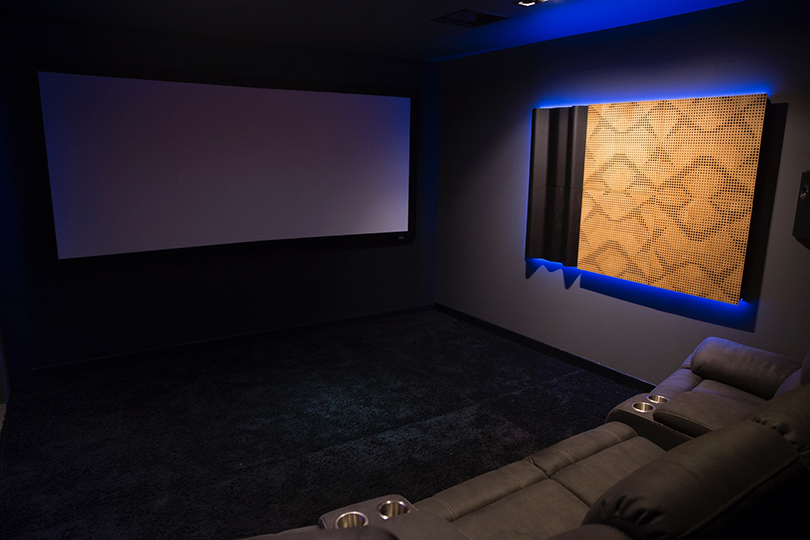
Dirac Live – Room correction software
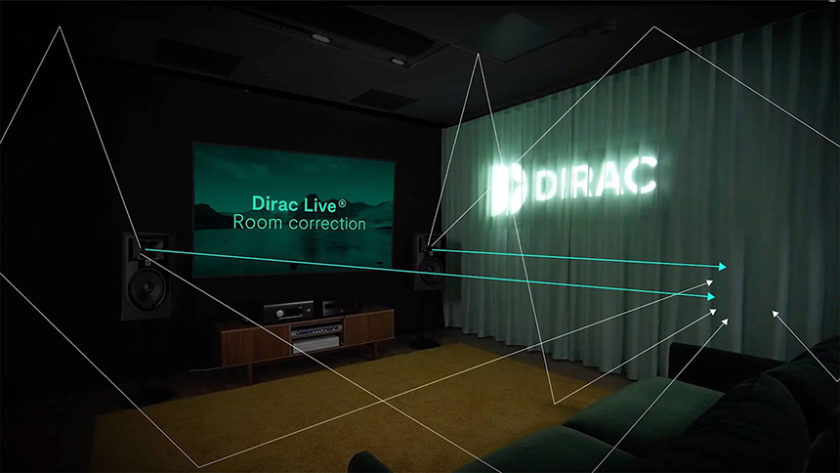
Having the best equipment doesn’t automatically mean you’ll have the best theater. Even if you’ve bought the priciest speakers on the market and installed them correctly, things might not sound exactly as you envisioned them to. This is where Dirac Live comes in. Dirac is an acoustic optimization software that transforms your home theater into an immersive cinematic experience. Dirac “applies state-of-the-art, patented algorithms to analyze and digitally reduce room impact and enhance speaker performance.” But put simply, Dirac is software that optimizes the sound anywhere you have speakers and an audio receiver.
Commercial movie theaters have been using audio calibration for years. Now, thanks to Dirac Live, you can optimize your own home theater in the same way. Using a microphone that you move around the room, the Dirac software analyzes the acoustics of different locations and uses EQ settings to optimize the speakers in every direction. Not only does this give you the immersive experience you’re looking for, but it also means that there isn’t a bad seat in your home theater.
Dolby Atmos
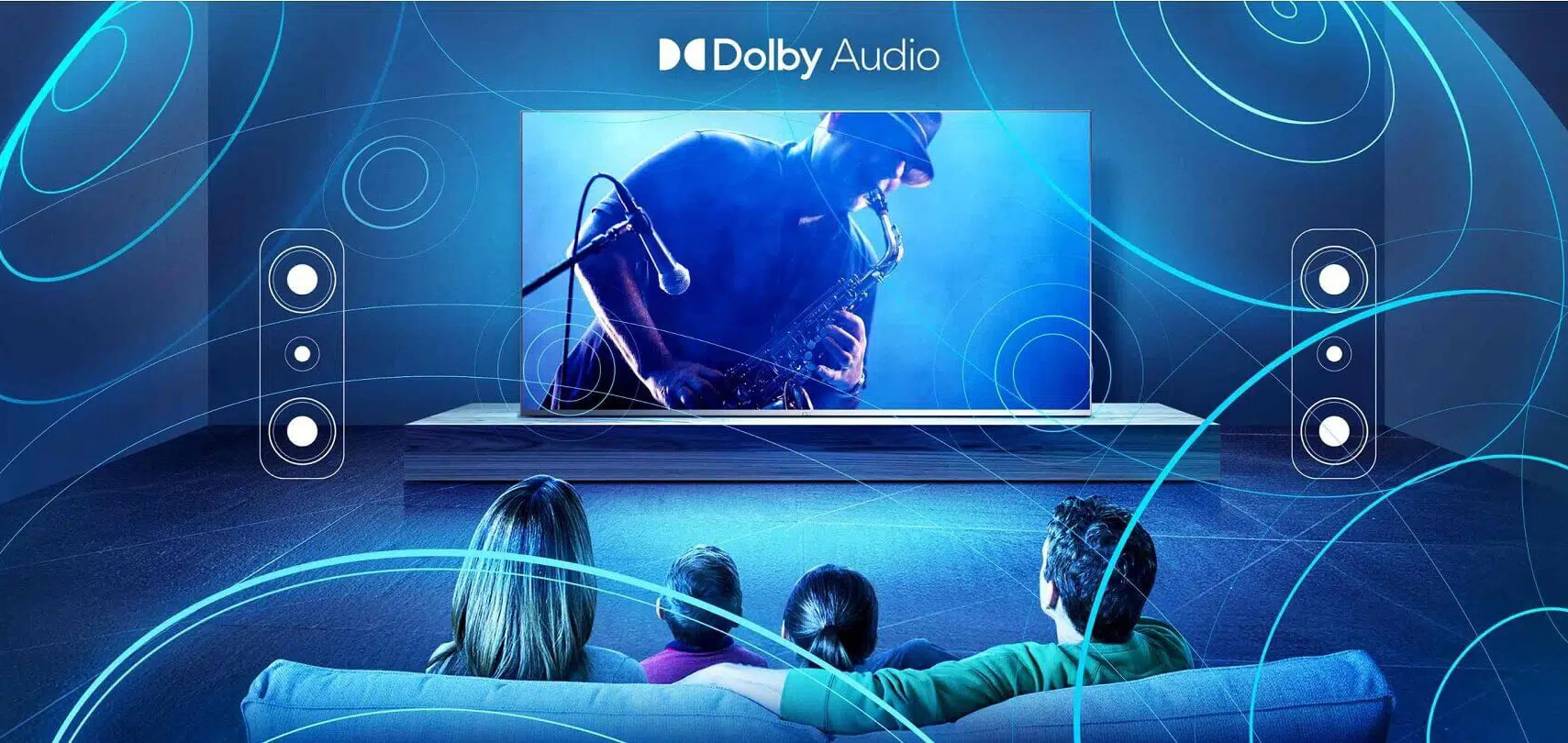
While a surround sound system is nothing new (and many of us have it in our media rooms), Dolby Atmos adds a layer of depth to your audio, transforming it from standard surround sound to what you’re used to experiencing a movie theater. Where regular surround speakers put you in a circle of sound, Dolby Atmos puts you in a sphere of sound, completing enveloping you wherever you sit. Traditional surround sound relies on speakers in the room’s front, sides, and back. Dolby Atmos furthers this by adding height channels, allowing sound to be heard as a three-dimensional object rather than just in front or behind you. Like most elements of home theater systems, Dolby Atmos is best left to the professionals. You can give it a go, but working with an integrator ensures you get the best possible surround sound experience.
Creating the perfect home theater
Choosing a projector
When looking for the right projector for your home theater system, there’s a few things you’ll want to consider. First is whether to go with a lamp or laser model. Lamp models are much cheaper, but the image quality declines over time and you’ll eventually have to change bulbs. Laser and LED projectors cost more, but they run cooler and last up to 30,000 hours. Second, you’ll want to decide on resolution. Here, we recommend going for 4k resolution. 720p or 1080p projectors do exist and are cheaper, but you get what you pay for. And on a 100″+ screen, the difference in resolution is quite noticeable. Finally, see what special features you need to ensure your projector will work for your space. This can include HDR to give your video more dynamic contrasts, or ensuring that your projector has enough HDMI inputs for all your devices. At the end of the day, working with a smart home integrator will take the guesswork away from you and ensure your home theater projector is set up correctly.
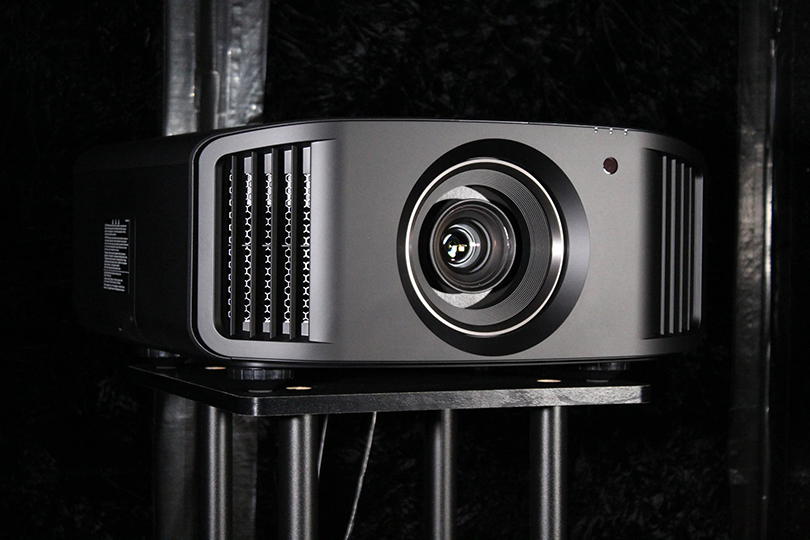
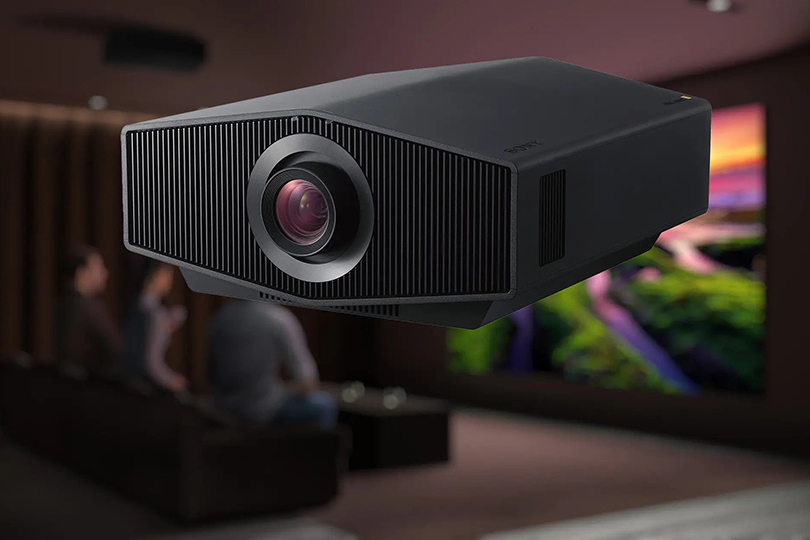
Choosing speakers
Many speaker companies will claim their sound-bar or stereo speaker delivers surround sound or works with a home theater. Still, the fact is only a properly set up audio system with 5-9 speakers and a separate subwoofer will create that cinematic experience you’re looking for. So how do you choose the right speakers? After all, there are hundreds, if not thousands, on the market. In our Secret Cinema at our showroom, we rely on JBL Synthesis speakers and their SDR-35 receiver to power the space. If you’re looking to create a perfectly tuned home theater, JBL Synthesis is the way to go. If this isn’t in your price range, work with your AV integrator to find a solution that works for you without compromising performance (we’ve had great success with the TDG Skybar system). Regarding placement, in a basic 5.1 surround system, you’ll have a speaker in front, one on either side of you, and two in the back. Additional speakers can add to your surround sound experience.
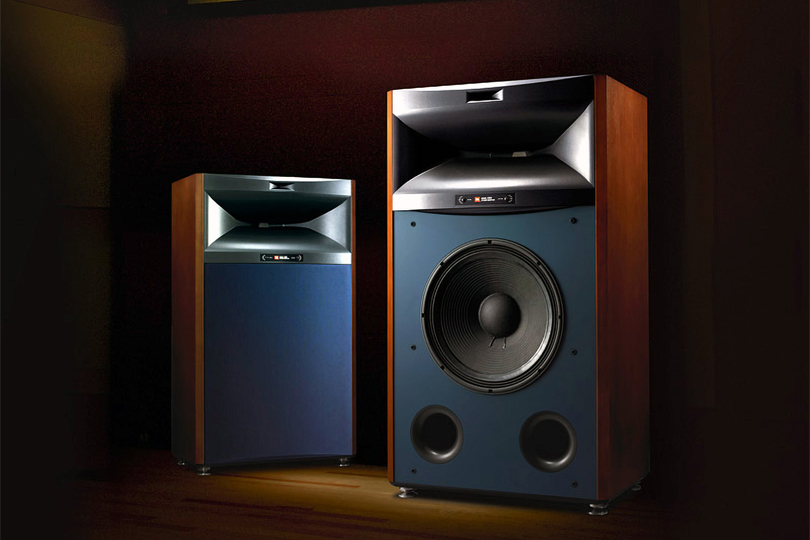
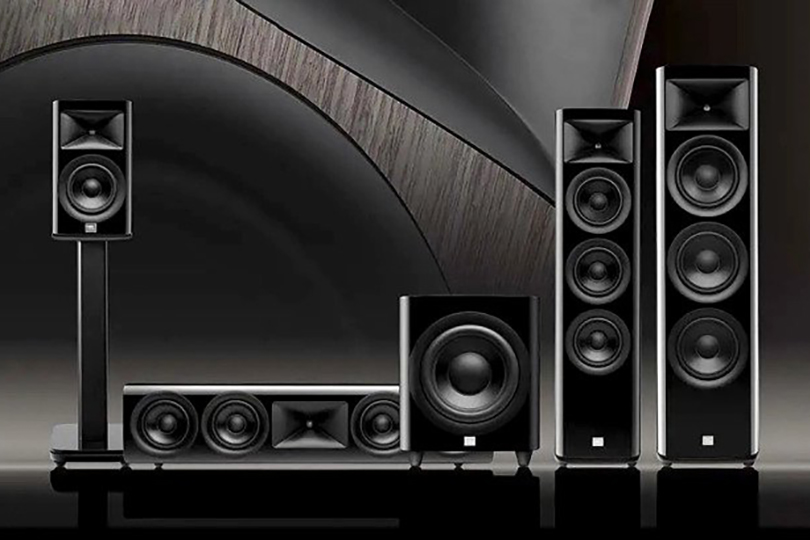
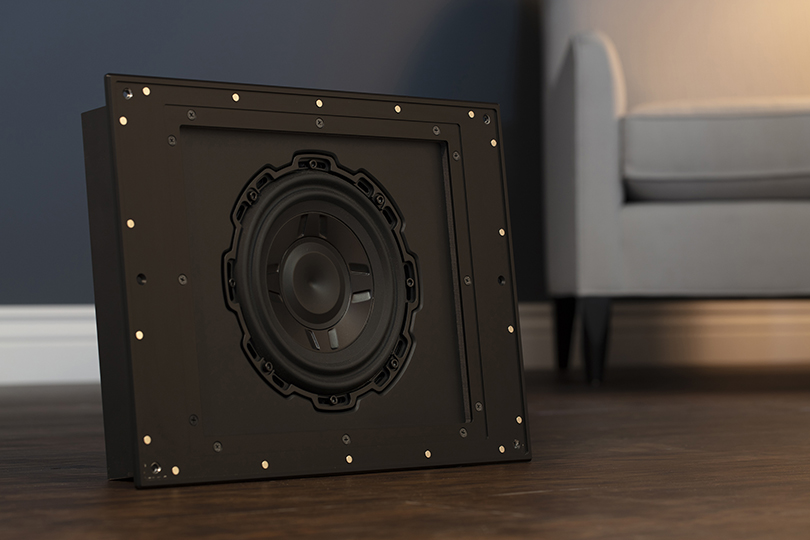
Behind the scenes
Your Audio-Video (AV) receiver will serve as the central hub of your home theater system, seamlessly connecting various audio and video sources to a television or projector and delivering immersive sound through a speaker setup. Functioning as the brain behind the brawn of a home theater, an AV receiver combines functionalities such as audio and video processing, amplification, and signal distribution. It supports a multitude of input devices like Blu-ray players, gaming consoles, streaming devices, and audio players, while simultaneously decoding and optimizing audio formats for surround sound systems. With its ability to manage and enhance both visual and auditory experiences, an AV receiver plays a pivotal role in creating a captivating and truly cinematic home entertainment environment.
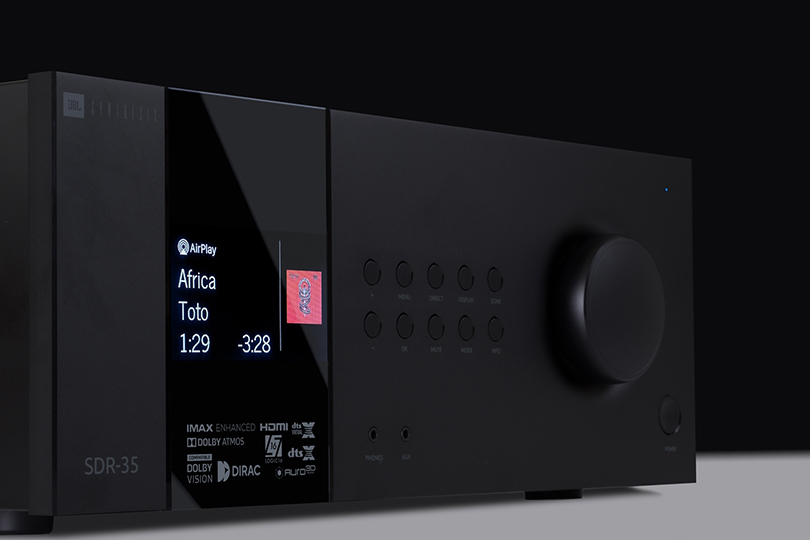
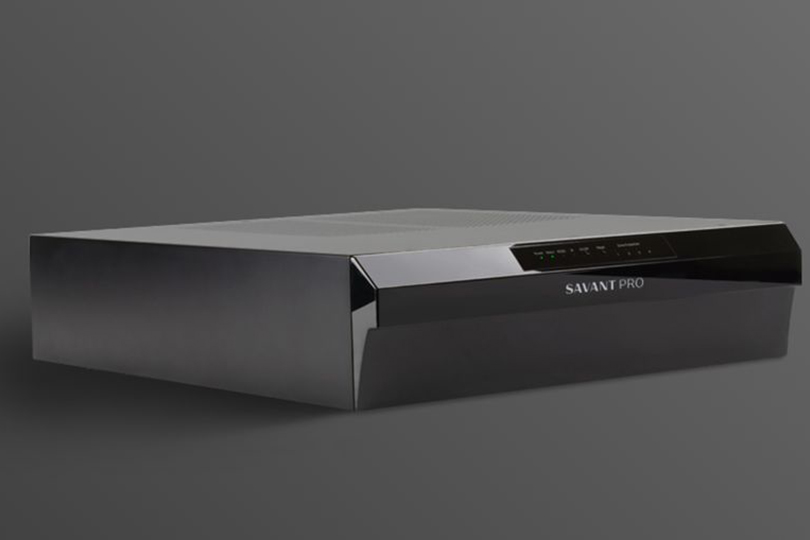
Extra pieces
Technology alone isn’t what makes a home theater shine. Everything from voice control, to lighting, to seating can transform your home theater from an empty space into a place to escape into cinematic magic. Ketra Lighting and its limitless color spectrum can set the mood for any film. It can also dim down to less than 1% to set the perfect ambiance. Josh.ai voice control can add a touch of elegance and simplicity to your home theater, allowing you to dim the lights, lower the projection screen, and start the movie, all with a single voice command. Working with an AV expert or smart home integrator can ensure your home theater is built optimized and ready to go. DIY solutions exist at big box stores like Best Buy and Walmart, but if you want a true cinematic experience in your home, trust in the experts to design and install your home theater.

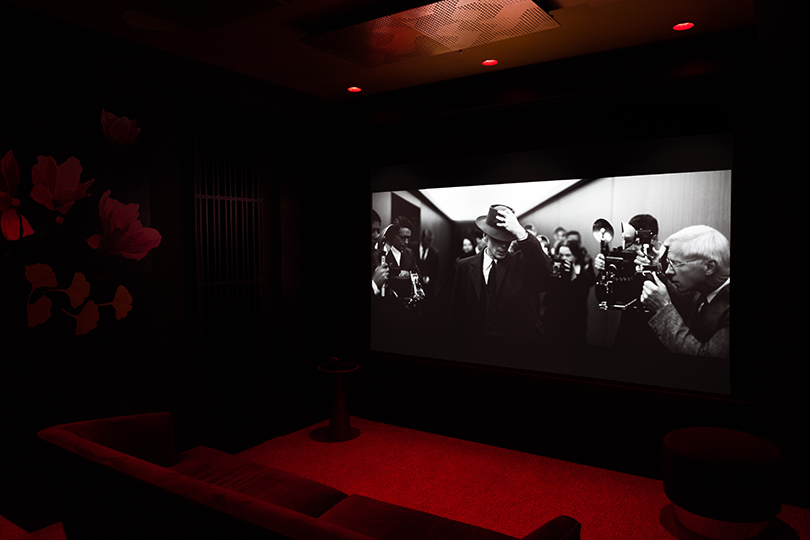
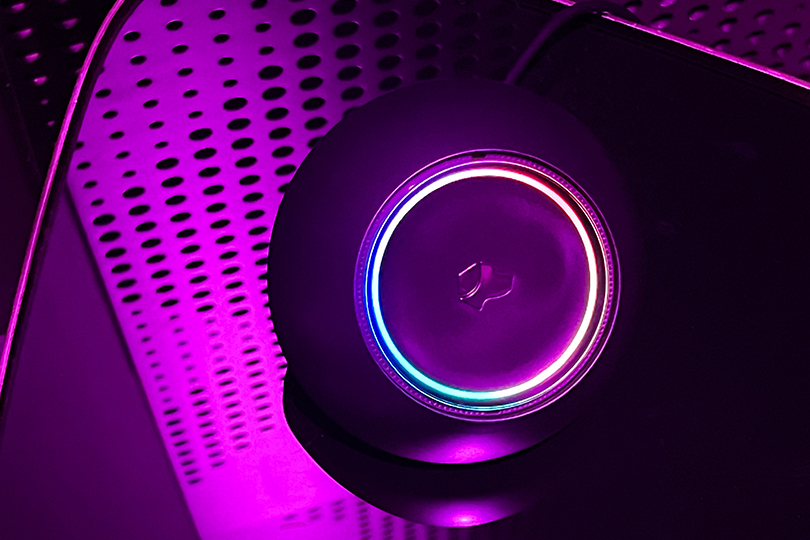
FAQs
Are private cinemas and home theaters the same?
Yes! While most people use home theater more often, we will often use the term “private cinema” because it better describes how you’re getting the same immersive experience of a Dolby Atmos-certified cinema in your own home.
Are home theaters and media rooms the same?
A home theater is a dedicated cinema room, acoustically optimized and specifically designed to give you the most immersive cinematic experience. A media room is a bit more versatile. While a media room might still have surround sound audio and high quality video, it can be used for a variety of purposes. Read more about Home Theaters vs. Media Rooms in our smart home blog.
Can I convert any room in my home into a home theater?
While we’ve seen and designed home theaters in a variety of rooms, home theaters are best set up in rooms where you can control the room’s lighting (be able to eliminate ambient lighting entirely), and don’t suffer the distraction of excess furniture or household items. Finished basements often work well for home theaters as they are away from any natural light and allow you more easily optimize the space acoustically.
Can I install my own private cinema?
Like anything involving home technology, a private cinema is best left in the hands of a professional for design and installation. While your local Best Buy might have a lot of the equipment you need, a smart home integrator will help with design, placement, wiring, and calibration of your system to ensure the best possible experience.
How do I choose the right size screen for my home theater?
The size of the screen should be based on the viewing distance and the space available in your home theater. A general rule of thumb is that the screen should be one-third the distance from the viewer to the screen. Like most parts of a home theater, it’s best to leave the design to the professionals.
What type of lighting should I have in my home theater?
To create a true movie theater experience, it’s best to use low-level ambient lighting or dimmable lights. In our best home theaters, we turn to Ketra. Ketra has the widest range of color on the market today, and is one of the few solutions that can truly dim correctly. That means when you bring a Ketra light down to 1%, you’re actually getting 1% of the light being used. Incorrectly placed or lesser lighting solutions in a home theater can ruin the experience you’re aiming for.
